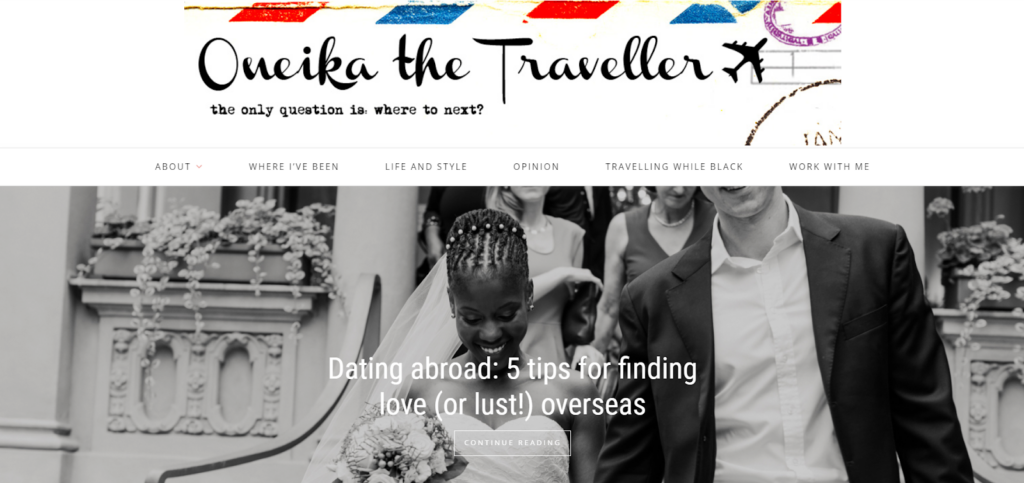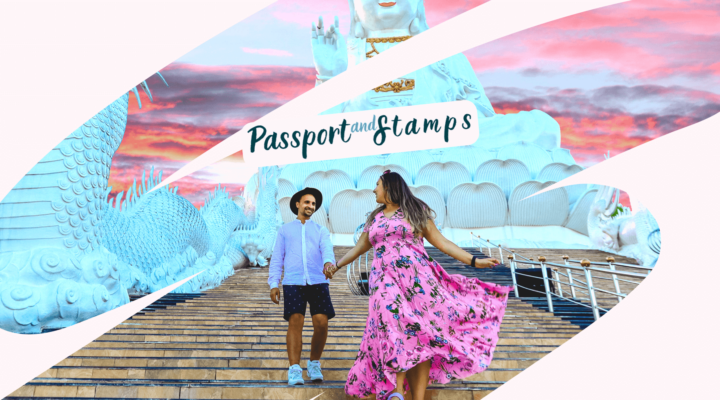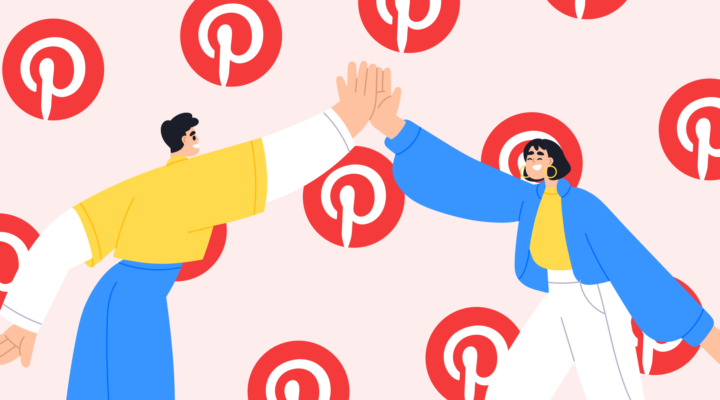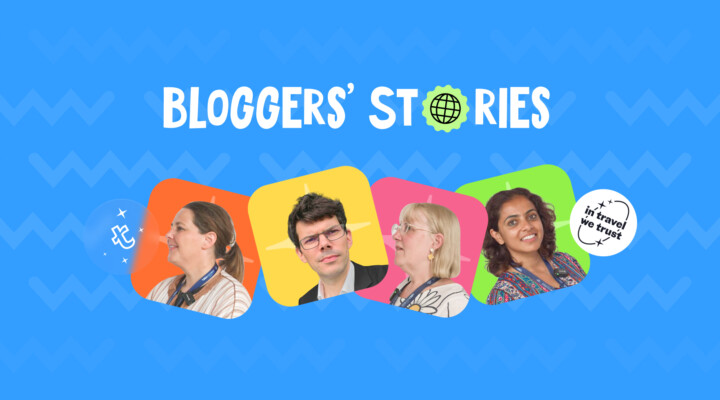Oneika the Traveler
Oneika Raymond is a travel blogger with over 15 years of experience and 115 countries under her belt. She is the voice behind Oneika The Traveler, an award-winning travel blog designed to inspire people of color see the world. She is also a TV host, media personality, correspondent for NBC New York and CTV Canada, keynote speaker, and more.

Oneika grew up in Canada and went to university in France. Upon returning home, she looked for ways to travel to Europe again and started a 10-year career teaching overseas. This job took her to England, France, Mexico, and Hong Kong.
In 2005, Oneika started a travel blog to document her adventures. By 2016, she was receiving attention from different outlets and started getting paid for travel writing and photography. Around that time, Instagram began growing, influencer and brand marketing became a thing, and Oneika went full-time into blogging and being a travel influencer, journalist, and host.

In this interview, Oneika shared first-hand tips on how to find new partnership opportunities, reach out to brands, drive traffic to your site, and attract new audiences. You’ll also learn how personal branding can be a survival strategy during the COVID-19 pandemic and why it’s crucial to always keep evolving in what you do.
Leveraging Publicity
Publicity is a wonderful thing if you want to monetize your personal brand. You can be the best writer or blogger, but if people don’t know you exist or how to find you, you won’t be able to make money online through brand marketing.
Oneika finds [3:03] PR to be integral to her blog and career growth. At first, blogging was something she did just for fun, but when a couple of her posts went viral (around 2011), she gained media attention, which helped her develop a personal brand. Certain publications and brands were attracted by what Oneika was doing and offered partnership opportunities.
Finding Partnership Opportunities
The blogging space was much different when Oneika started out. While social media wasn’t quite as prolific then, it is definitely worth leveraging now to attract an audience. This is especially true at a time when the pandemic is largely limiting offline communications and people are glued to their screens. Social networks are the place to be.
TikTok might be one of the most powerful social platforms right now, as content posted to TikTok goes viral more easily than content posted on Instagram, which restricts posts and reach in a way that TikTok hasn’t done yet. So be sure to create content for TikTok alongside your personal site. With this said, Instagram is still a great platform to be active on. It is the biggest revenue driver for Oneika and a source of important brand partnerships, which earn her a six-figure annual income. This was the result of having a strong and authentic brand.
In addition, having a site with your own domain is imperative. If you build your presence solely on third-party platforms, your business is largely dependent on their operation. Creating a site is beneficial for showcasing your portfolio in one place so that potential partners can easily understand what it is that you’re doing.

Sometimes, old school methods like word-of-mouth advertising work just fine too. Your friends and family are likely to be your first and most engaged fans. They can really help grow your personal brand by leveraging their social networks and circles, both online and offline, as well as endorsing you to other people.
Oneika believes that success in blogging is all about relationships, thus the people who generate the most revenue are typically the most relatable. Relatability is built through relationships. To grow her network during the COVID-19 pandemic, Oneika started passing out business cards with her name and website. By using this approach, you can make a lasting impression and get a warm lead because people have actually met you in person.
Personal Branding vs Business Branding
Should you be investing in developing a personal brand or creating the best content first? Oneika believes [8:35] that it mostly depends on your business and revenue strategies. For instance, as a media personality, Oneika is the product herself, so she places more importance on personal branding. However, both strategies aren’t mutually exclusive. You can have a product or company and also be the face of that company.
Developing a personal brand is advantageous because it doesn’t rely solely on Google’s fickle algorithms. For instance, travel bloggers who primarily monetized their content through display ads and affiliate links had their blogs massively devalued after the search engine released updates to the ranking mechanisms. The situation grew even worse after COVID-19 happened, as travel-related keywords lost their search volume.
Oneika also saw her income drop in the first half of the year, but things got better quickly, as in-person events and broadcasting resumed and companies started to invest in influencer marketing and branded-content campaigns again.
In fact, personal branding can be a survival strategy during this uncertain time. While it’s not easy to switch niches when you run a site on a particular topic, personal branding allows you to explore other possibilities. For instance, Oneika pivoted towards lifestyle content instead of travel and also targeted a new audience of moms, as she recently became a mom herself. That shift was pretty easy to make since most of her readers were interested in Oneika personally.
Reaching Out
It’s essential to understand that if you don’t put effort into outreach, nothing is going to fall into your lap. Big investments or hiring a PR firm are not required, as you can approach people yourself by sending cold emails.
First of all, be sure to create a media kit, which is basically your resumé or digital portfolio. This will help people quickly understand what your blog is about, what your niche is, and who your readers are. Try to make your media kit interactive and visually appealing.
Next, you can start your outreach campaign and send your media kit alongside emails. Naturally, there are many ways to find contacts, but today this is mostly done through the internet. For example, Oneika used [18:00] to find people on Twitter and LinkedIn and cold email them before she hired a manager to take care of outreach.
Attracting Traffic
First, be prolific when creating content. You have to consistently produce content to attract an audience, even to the point of being annoying. Nobody is going to follow you if you have just one post.
Second, your content should draw people in and be relevant. Chances are, if you are writing about current trends or events, people are willing to read and share whatever you are saying. Thus, it’s imperative to understand what your audience is curious about at all times.
Third, find topics that you personally feel passionate about and are well versed in. For example, as Oneika has been traveling since childhood, writing travel stories was kind of her thing and success didn’t take long.
Finally, it’s important to utilize various platforms and diversify your income. Relying on one network is rather risky, as any changes in algorithms can significantly affect your performance.
Always Keep Evolving
Oneika believes [23:30] that being passionate about what you do organically inspires growth. For instance, she started out as a blogger and, over the years, evolved into a TV host, media personality, and speaker simply by creating content in different ways and on different platforms.
It’s naturally for a brand to evolve because, as a person, you’re always growing and changing. Be sure to constantly re-evaluate what it is that you want and where you want to be in one year or in a decade. This will guide the processes you engage in and help get you to those places.



